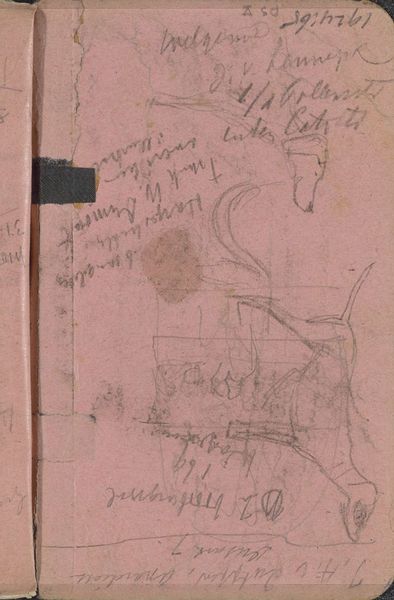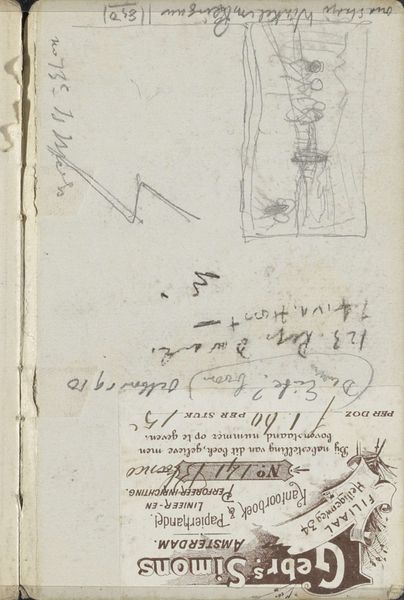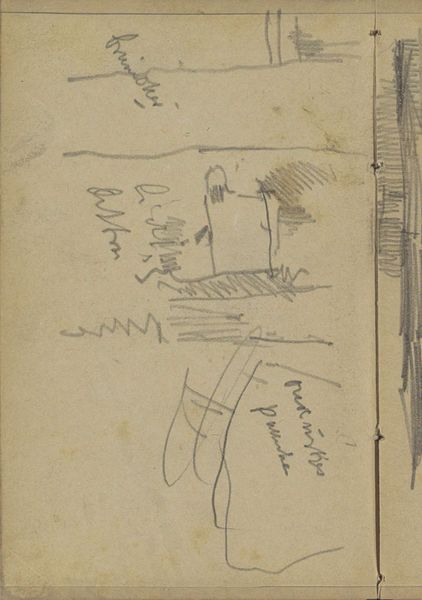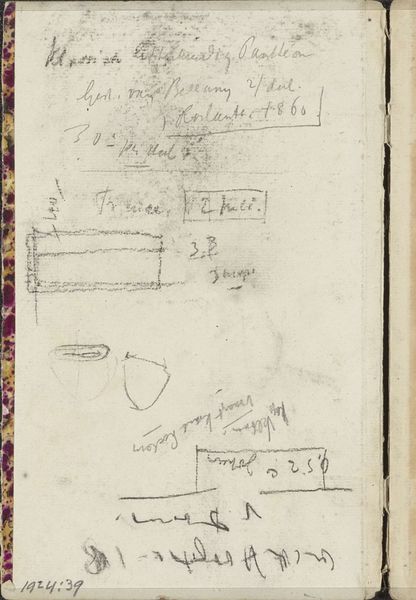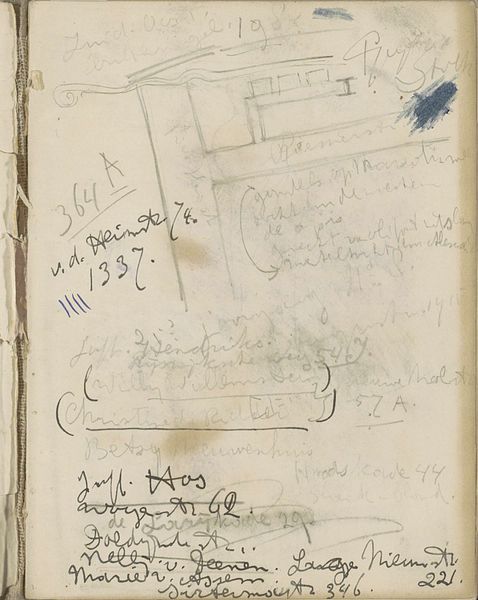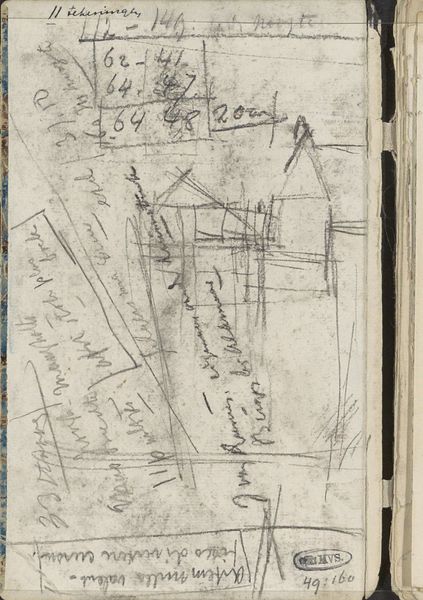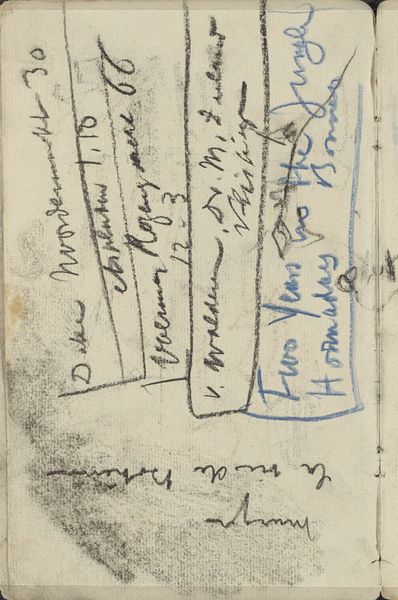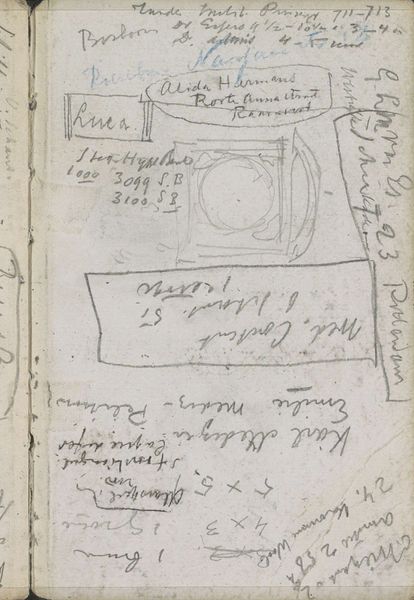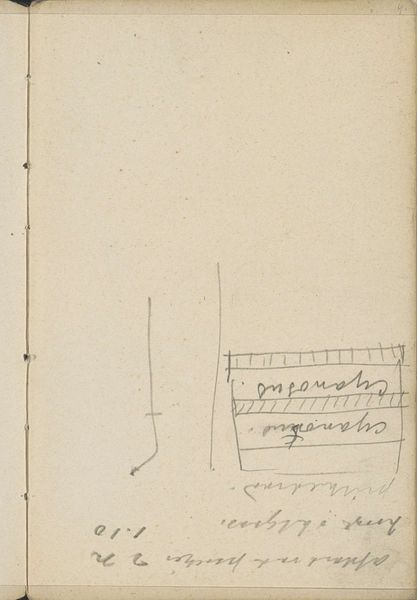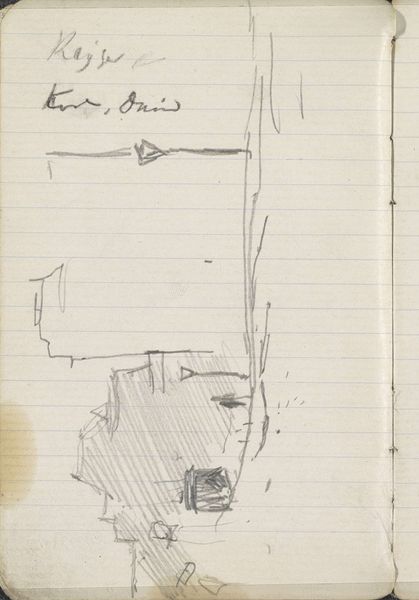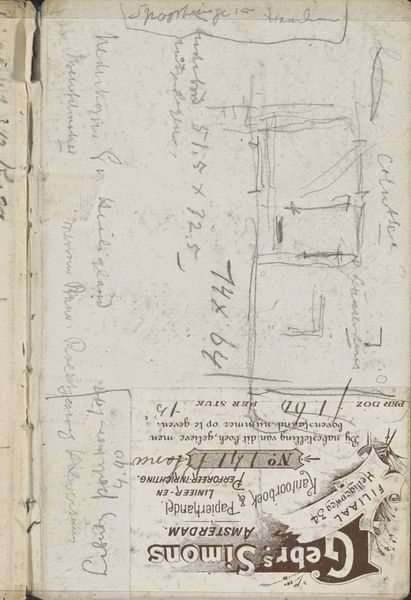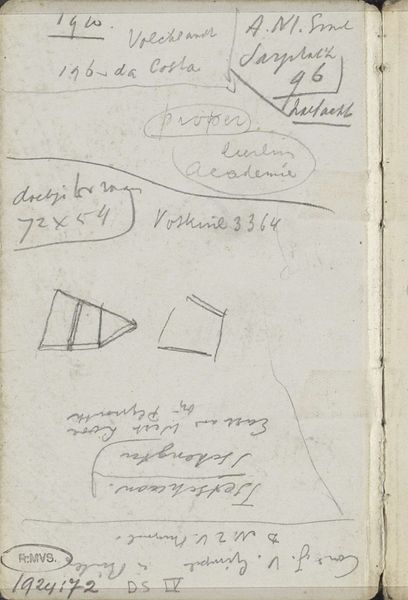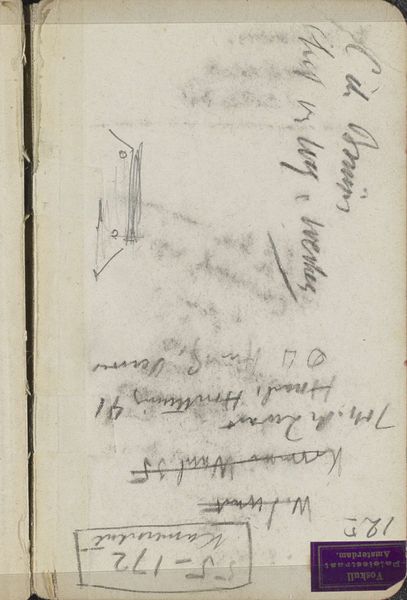
Copyright: Rijks Museum: Open Domain
Editor: So, this is "Studies en annotaties" by George Hendrik Breitner, created sometime between 1896 and 1901. It’s a pencil drawing on paper, currently held at the Rijksmuseum. The page has this aged look with handwritten notes alongside sketched forms. What strikes me is the intimacy of it - it's like a peek into the artist's personal sketchbook. What do you see in this piece? Curator: Well, putting my historian's hat on, I see a fascinating artifact of artistic process and the socio-cultural context in which Breitner operated. The sketch book, as a material object, speaks volumes. These glimpses into his notes are really amazing. Can you see that faded lettering and annotations scattered across the page? Those provide valuable clues into how he perceived and processed the urban landscape around him. This personal "Studies" demonstrates a different, even informal perspective compared to his larger-scale works that we're accustomed to seeing on display. The question is, how might its informal presentation affect how this sketch could have been received, relative to a painting in the Rijksmuseum at that same moment in time? Editor: That’s interesting! So, the sketches, combined with these almost scribbled notes, offered a window into both the planning and private, unrefined thoughts behind it all? Was this accessible at the time to the average citizen visiting the Rijksmuseum, or mostly only available to Breitner? Curator: Exactly! These notations offer insight into how artists made decisions in art, that have largely been obscured over time and unavailable for study outside of similar sketchbooks by other artists. However, remember, art museums have been around much longer than modern academic approaches to art history, which means the political implications of Breitner putting this "raw," as it were, behind a picture frame. Editor: This gives me a whole new perspective on the function and cultural importance of such commonplace, simple objects like a sketchbook! Thank you. Curator: Indeed, viewing artworks such as these as products of socio-historical structures allows us to re-evaluate our understanding of both "what" and "why" something has been produced.
Comments
No comments
Be the first to comment and join the conversation on the ultimate creative platform.
